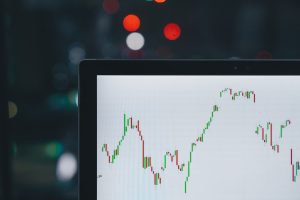In the world of forex, it is important to understand the concept of maximum and minimum levels. Maximum levels are the highest price at which a currency pair is expected to trade, while minimum levels are the lowest price at which a currency pair is expected to trade. Traders who can correctly identify these levels can make informed decisions about when to enter or exit trades, and when to take profits or cut losses. In this article, we will explore the various factors that can help traders identify when a forex pair has maxed out on maximum and minimum.
1. Technical analysis
Technical analysis is a popular method used by forex traders to identify trends and patterns in price movements. By analyzing charts, traders can identify key support and resistance levels, which can help determine maximum and minimum levels for a currency pair. Support levels are areas where buyers are expected to enter the market, leading to a price increase, while resistance levels are areas where sellers are expected to enter the market, leading to a price decrease.
When a currency pair reaches a resistance level, it may struggle to go higher, leading to a potential reversal. Conversely, when a currency pair reaches a support level, it may struggle to go lower, leading to a potential reversal. Traders can use technical indicators such as moving averages, Bollinger Bands, and MACD to confirm these levels.
2. Fundamental analysis
Fundamental analysis is another method used by forex traders to identify maximum and minimum levels. This involves analyzing economic and political factors that can affect currency prices. For example, if a country’s economy is growing, its currency may appreciate due to increased demand from foreign investors. Conversely, if a country’s economy is struggling, its currency may depreciate due to decreased demand from foreign investors.
Traders can also analyze interest rates, inflation rates, and other economic indicators to determine the likelihood of a currency pair reaching its maximum or minimum level. For example, if a central bank raises interest rates, this can lead to a stronger currency, potentially pushing it towards its maximum level.
3. Market sentiment
Market sentiment refers to the overall attitude of traders towards a particular currency pair. If the majority of traders are bullish on a currency pair, this can lead to increased buying pressure, potentially pushing it towards its maximum level. Conversely, if the majority of traders are bearish on a currency pair, this can lead to increased selling pressure, potentially pushing it towards its minimum level.
Traders can monitor market sentiment by analyzing news articles, social media posts, and other sources of information. They can also use tools such as the Commitment of Traders (COT) report to see how professional traders are positioned in the market.
4. Volatility
Volatility refers to the degree of fluctuation in a currency pair’s price. High volatility can make it difficult to determine maximum and minimum levels, as prices can quickly move beyond these levels in either direction. Traders can use tools such as the Average True Range (ATR) indicator to measure volatility and adjust their trading strategies accordingly.
5. Risk management
Finally, traders should always prioritize risk management when trading forex. This means setting stop-loss orders to limit potential losses, and taking profits at predetermined levels to lock in gains. By doing so, traders can mitigate the risks associated with trying to predict maximum and minimum levels, and focus on making consistent profits over the long term.
In conclusion, identifying maximum and minimum levels for a forex pair requires a combination of technical and fundamental analysis, market sentiment, volatility, and risk management. By understanding these factors, traders can make informed decisions about when to enter or exit trades, and when to take profits or cut losses.






